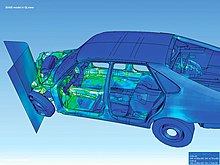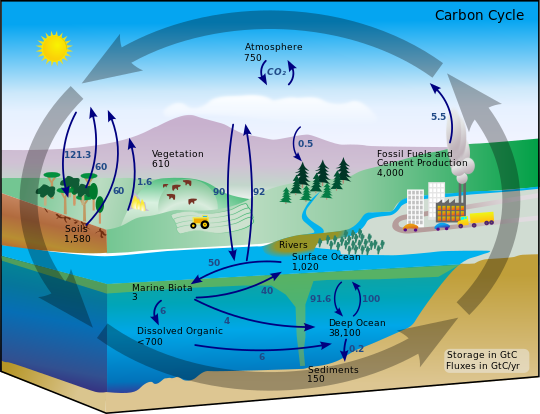From Wikipedia, the free encyclopedia
Environmental engineering science (EES) is a multidisciplinary field of engineering science that combines the biological, chemical and physical sciences with the field of engineering. This major traditionally requires the student to take many basic engineering classes in fields such as thermodynamics, advanced math, computer modeling and simulation as well as technical classes in subjects such as statics, mechanics, hydrology, and fluid dynamics. As the student progresses, the upper division elective classes define a specific field of study for the student with a choice in a wide range of science, technology and engineering related classes.[1]

Graduates of Environmental Engineering Science can go on to work on the technical aspects of designing a Living Roof like the one pictured here at the California Academy of the Sciences
As a recently created program, environmental engineering science has not yet been incorporated into the terminology found among environmentally focused professionals . It should be noted in the few engineering colleges that offer this major, the curriculum shares more classes in common with environmental engineering than it does with environmental science. Typically, EES students follow a similar course curriculum with environmental engineers until their fields diverge during the last year of college. While, a majority of the environmental engineering students must take classes designed to connect their knowledge of the environment to modern building materials and construction methods. This is meant to steer the environmental engineer into a field where they will more than likely assist in building treatment facilities, preparing environmental impact assessments or helping to mitigate air pollution from specific point sources.
Meanwhile, the environmental engineering science student will choose a direction for their career. From the wide range of electives they have to choose from, these students can move into a wide range of fields in anything from the design of nuclear storage facilities, bacterial bioreactors or environmental policies. With this in mind, it is important to note that these students combine the practical design background of an engineer with the detailed theory found in many of the biological and physical sciences. In other words, these students have the capabilities to imagine, design and build ideas from many interconnected disciplines concerned with the healthy fate of our environment.
Description at universities
UC Berkeley
The College of Engineering at UC Berkeley defines Environmental Engineering Science as follows[1]This is a multidisciplinary field requiring an integration of physical, chemical and biological principles with engineering analysis for environmental protection and restoration. The program incorporates courses from many departments on campus to create a discipline that is rigorously based in science and engineering, while addressing a wide variety of environmental issues. Although an environmental engineering option exists within the civil engineering major, the engineering science curriculum provides a more broadly based foundation in the sciences than is possible in civil engineering. This major prepares the student for a career or graduate study in many environmental areas.
Massachusetts Institute of Technology
At MIT, the major is described in their curriculum and says[2]The Bachelor of Science in Environmental Engineering Science emphasizes the fundamental physical, chemical, and biological processes necessary for understanding the interactions between man and the environment. Issues considered include the provision of clean and reliable water supplies, flood forecasting and protection, development of renewable and nonrenewable energy sources, causes and implications of climate change, and the impact of human activities on natural cycles. Both programs provide awareness of the sociopolitical context in which civil and environmental engineering problems are solved. Premedical students may satisfy medical school entrance requirements while earning the accredited degree in environmental engineering science with proper planning of their program.
Lower division coursework
Lower division coursework in this field requires the student to take several laboratory-based classes in calculus-based physics, chemistry, biology, programming and analysis. This is intended to give the student background information in order to introduce them to the engineering fields as well as prepare them for more technical information in their upper division coursework.Upper division coursework

Students learn to integrate their advanced knowledge of math and statistics with software such to perform analysis of physical systems like the Finite Element Analysis shown above
The upper division classes in Environmental Engineering Science prepares the student for work in the fields of engineering and science with coursework in (but not limited to) the following subjects[1]
- Fluid mechanics
- Mechanics of materials
- Thermodynamics
- Environmental engineering
- Advanced math and statistics
- Geology
- Physical, organic and atmospheric chemistry
- Biochemistry
- Microbiology
- Ecology



















